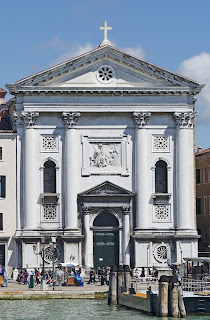The success and the sadness in the life of musical priest
 |
| A portrait of Antonio Vivaldi painted by an anonymous artist in around 1723 |
Widely recognised as one of the greatest Baroque composers, he had an enormous influence on music throughout Europe during his own lifetime.
His best-known work is a series of beautiful violin concertos called The Four Seasons.
Vivaldi was a prolific composer who enjoyed a lot of success when his career was at its height.
As well as instrumental concertos he composed many sacred choral works and more than 40 operas.
Vivaldi’s father taught him to play the violin when he was very young and he became a brilliant performer. At the age of 15 he began studying to be a priest and he was ordained at the age of 25. He soon became nicknamed ‘Il Prete Rosso’, the red priest, because of his red hair.
He became master of violin at the Ospedale della Pietà, an orphanage in Venice, and composed most of his works while working there during the next 30 years.
The orphaned girls received a musical education and the most talented pupils stayed on to become members of the Ospedale’s orchestra or choir. Vivaldi wrote concertos, cantatas and sacred vocal music for them to perform.
Listen to Vivaldi's 'Summer' concerto from The Four Seasons, performed by the Italian chamber orchestra I Musici
His first opera was produced in Vicenza in 1713 and he was invited to Mantua to be director of music for the city’s governor in 1718.
At the height of his career, Vivaldi received commissions from European nobility and royalty. After meeting the Emperor Charles VI he moved to Vienna with the intention of staging some of his operas there. But Charles VI died shortly after his arrival, leaving the composer with no income or royal protection.
Vivaldi became impoverished and died in 1741 following an infection. He was given the equivalent of a pauper’s funeral in Vienna.
 |
| The Church of La Pietà. Photo: Didier Descouens (CC BY-SA 3.0) |
Vivaldi was baptised by the midwife immediately after his birth at his family’s home in the Castello district of Venice. His official church baptism took place two months later at the simple Gothic-style Church of San Giovanni Battista in Bragora in Campo Bandiera e Moro in Castello.
Find a Venice hotel with Tripadvisor
The Church of La Pietà, or Santa Maria della Visitazione, on Riva degli Schiavoni facing the lagoon, dates back to the 15th century. It started its life as a foundling home for orphans. From 1703 till 1740 Vivaldi directed the Pietà’s musical groups and composed music for the orchestra and choir. The church is now a regular venue for concerts featuring Vivaldi’s music.
Venice hotels by Booking.com
More reading:
How Giovanni Gabrieli inspired the spread of the Baroque music style
Tomaso Albinoni, Venetian who composed a famously haunting adagio
Francesco Gasparini, the musical director who took Vivaldi on at the Ospedale della Pietà
Also on this day:
1848: The first Italian Constitution is agreed
1943: The birth of singer-songwriter Lucio Dalla
Selected books:
The Vivaldi Compendium, by Michael Talbot
Vivaldi: Red Priest of Venice, by Susan Adams
Home







